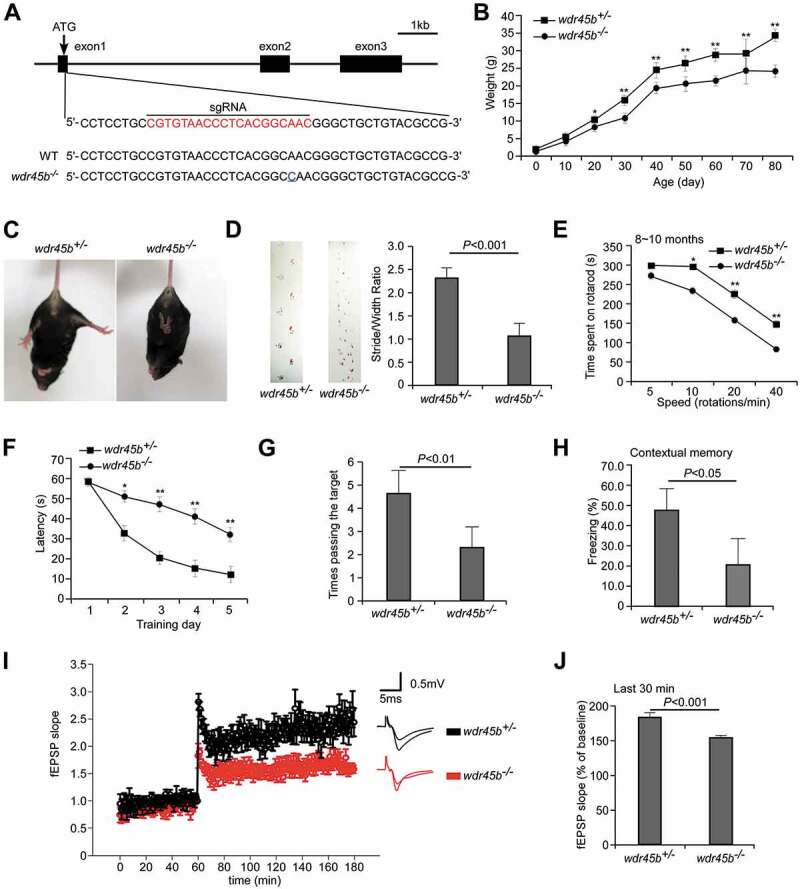Figure 1.

wdr45b-/- mice show motor defects and cognitive impairment. (A) Scheme for generation of wdr45b KO mice by the CRISPR-Cas9 system. The sgRNA-targeting sequence is highlighted in red. Sequencing of genomic DNA identified mutant mice with a 1-bp insertion in the targeting site (blue underline), which causes a frame-shift mutation. (B) Body weight curves of wdr45b+/- and wdr45b-/- males. Mean ± SD of 6 mice is shown. *, P < 0.05; **, P < 0.01. (C) wdr45b-/- mice show a limb-clasping reflex. (D) In gait analyses, the step width of wdr45b-/- mice at 8 ~ 10 months is significantly shorter than that of control littermates (forefeet, green; hindfeet, red). Mean ± SEM (n = 8) is shown. (E) Rotarod performance of wdr45b+/- and wdr45b-/- mice at 8 ~ 10 months of age at speeds of 5, 10, 20 and 40 rotations/min. Mean ± SEM (n = 10) mice is shown. *, P < 0.05; **, P < 0.01. (F and G) In the Morris water maze test, wdr45b-/-mice at 8 ~ 10 months of age show increased latency to locate the hidden platform during the learning stage (F), and they pass the target site fewer times in the spatial probe test (G), compared to control mice. Mean ± SEM (n = 9) is shown. *, P < 0.05; **, P < 0.01. (H) In the contextual fear conditioning test, the freezing time of wdr45b-/- mice at 8 ~ 10 months of age is significantly reduced, compared to control mice. Mean ± SD (n = 10) is shown. (I and J). LTP is attenuated in wdr45b-/- mice at 10 months of age (I). The average responses from the last 30 min in the control and wdr45b-/- mice are shown in J. Mean ± SEM (n = 9) is shown.
